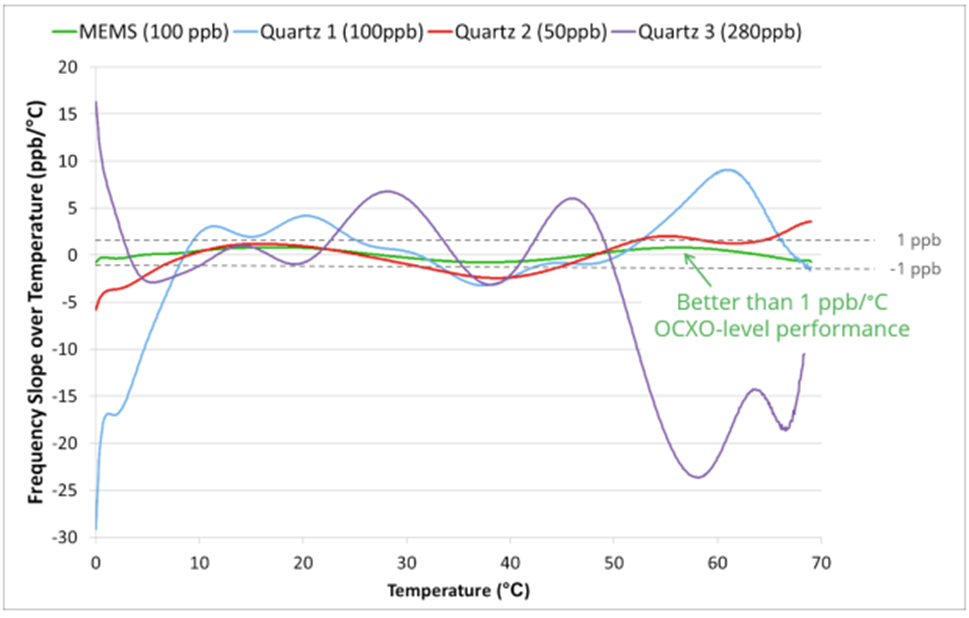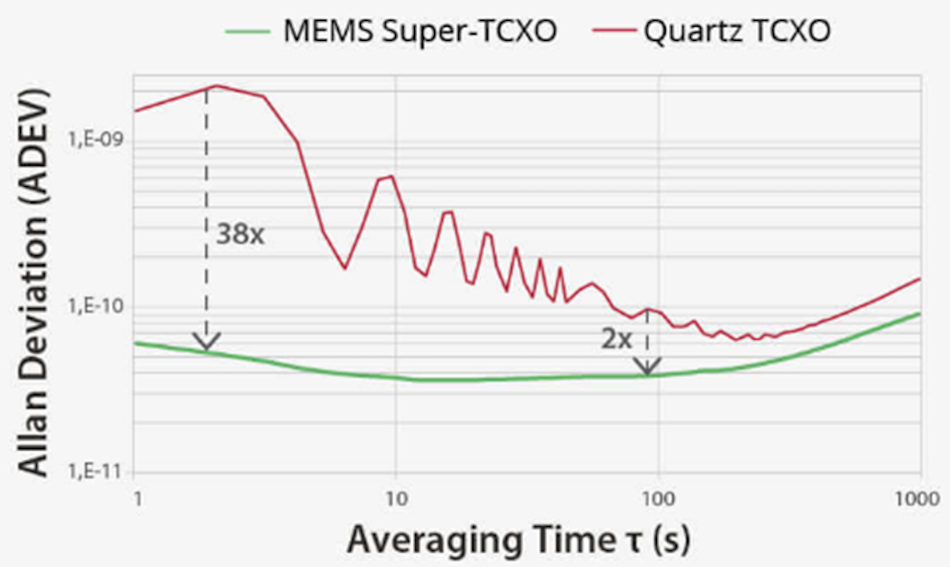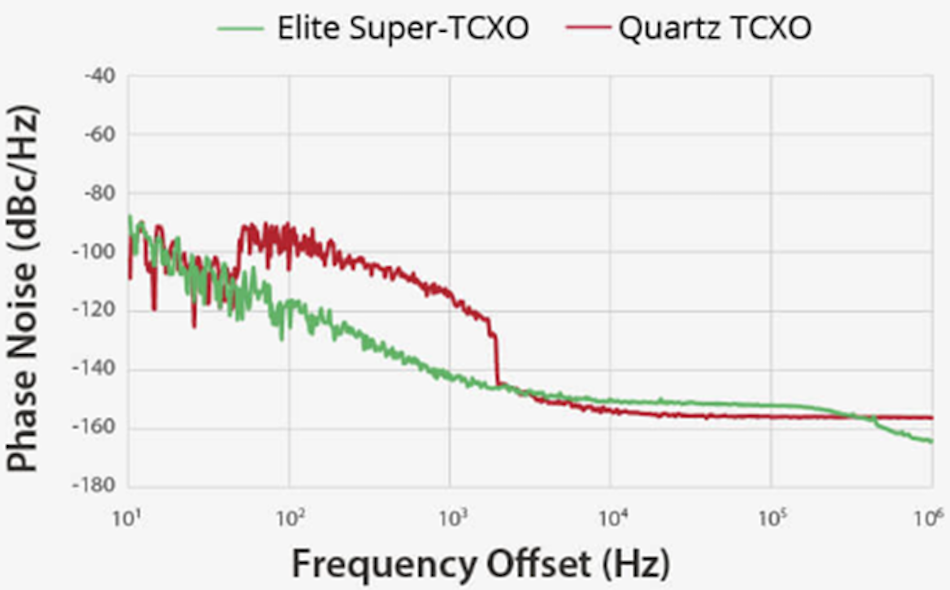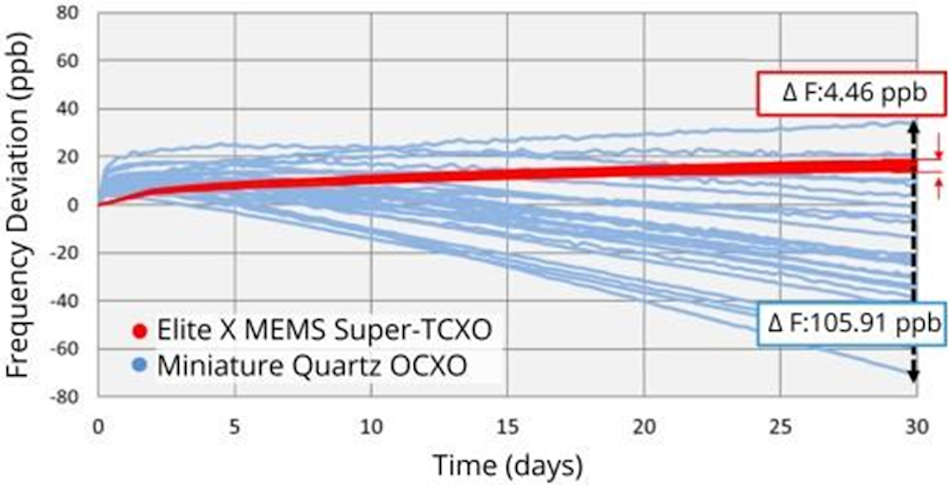Everywhere I turn these days I discover more instances of the need for precision timing. I’m also learning about various amazingly clever solutions engineers have come up with to address some exceedingly complicated problems.
Consider packet-based networks, for example. Let’s suppose you have a master clock somewhere. How would you set about ensuring that any lowly remote nodes have the correct time (i.e., the same time as the master clock) simply by sending packets back and forth across the network? Before you answer, may I remind you that each packet may take a different path through the network, depending on the current state of any other network traffic. All I can say is that the Network Time Protocol (NTP), which was introduced circa 1985 and can achieve millisecond accuracy, and the Precision Time Protocol (PTP), which was introduced circa 2002 and can achieve sub-microsecond accuracy, are incredibly cunning solutions to a mind-bendingly complex problem.
Most people typically don’t consider automobiles and packet-based networks as being related, but they have more in common than you might think. For example, today’s cars may employ packet-based networks to ferry data around the vehicles themselves, plus they may be connected to the outside world via 4G or 5G cellular networks, which are themselves packet-based. And, just for giggles and grins, system-on-chip (SoC) devices inside the cars may themselves employ one or more network-on-chip (NoC) packet-based networks to communicate data between IP functions inside the devices (for example, I believe FlexNoc Interconnect IP from Arteris can be found in 70% of automotive ADAS SoCs).
Actually, although this was unintentional, the packet-based discussions above might prove to be a bit of a red herring (a hareng rouge, if you will), because they aren’t particularly germane to the core of this column (it may help you to think of these deliberations as the ramblings of a deranged mind).
The point I was trying (and, I fear, failing) to make is that electronic systems are changing. These days, almost every device is intelligent and almost every device is connected. To put this another way, there’s an insatiable demand for connectivity, bandwidth, and low latency for real-time systems. Precision timing is at the heart of all intelligent, connected electronic systems, including automobiles, and oscillators are at the heart of all precision timing solutions.
There are, of course, a variety of oscillator options obtainable. For example, a cheap and cheerful RC oscillator uses a resistor and capacitor along with an amplifier and positive feedback to generate an oscillating signal, but the frequency of this type of oscillator can vary significantly due to environmental effects like temperature. At the other end of the spectrum are optical atomic clocks that use the oscillations of atoms to provide mindboggling precision and accuracy. For example, the latest such clocks are so accurate that—had they been around at that time and ceteris paribus (all other things being equal)—they wouldn’t have lost or gained a second since the universe came into existence around 13.7 billion years ago (not that I was there, you understand, but my mother told me all about it when I was a young lad). Of course, having one of these clocks in your car to provide timing would bump up the sticker price a little. Other alternatives include… but we shall return to these in a moment.
The reasons for my ruminations are twofold. It all started with my perusing and pondering a blog about the Four Megatrends in the Automotive Industry by Etienne Winkelmuller on the SiTime website. In case you were wondering, these trends are Electrification (Revolutionizing Drivetrain Technology), Shared Automobile Usage (Driving Reliability Needs), Safety (From Passive to Active), and Driving Automation (Managing the Data Explosion). This led me to chat with Piyush Sevalia, who is Executive Vice President of Marketing at SiTime.
Since the automotive market is so large and varied, it can be difficult to come up with absolute numbers for certain things, but SiTime believes that vehicles employed around 20 timing elements circa 2018. At the time of this writing, SiTime believes this number has grown to 60 timing elements per car and, by 2026, SiTime expects this number to grow to 100 or more.
But what is the underlying oscillator technology that is used to power these timing elements? I’m glad you asked. Until relatively recently, the “go-to” technology was the crystal oscillator, which is an electronic oscillator circuit that uses a piezoelectric crystal as a frequency-selective element.
The first crystal-controlled oscillator, using a crystal of Rochelle salt, was built in 1917 and patented in 1918 by Alexander M. Nicholson at Bell Telephone Laboratories. These days, the most common type of piezoelectric resonator used is a quartz crystal. The term “xtal” is short for “crystal,” which is why standard crystal oscillators employ the XO moniker.
A common way of categorizing oscillators is based on their stability over temperature. This is because, for a long time, the primary external stressor for higher volume oscillators was temperature. Thus, next up the accuracy hierarchy we find the temperature-compensated XO (TCXO), which is specifically designed to handle large variations in temperature. And then we have oven-controlled XO (OCXO) versions. These are based on a small oven containing the quartz resonator and associated circuitry. While the external ambient temperature may wander all over the place, the oven holds the temperature of the oscillator to within 1°C of its crystal’s ideal operating temperature.
You can pick up a regular XO for less than a dollar, while a TCXO can be yours for only a couple of dollars. What about an OCXO device? Well, let me put it this way: if you have to ask, then you can’t afford one. Seriously, a low-end OCXO might cost $50, and you can easily end up paying $100 or more, with ultra-high-stability and ultra-high-reliability oscillators costing around $1,000 at the high-end.. Even assuming the lowest price if you are buying in bulk, having 100 OCXOs in an automobile would add $50 x 100 = $5,000 to the base price of the car. Now I know where the term “sticker shock” came from.
Piyush told me that, these days, there’s a lot more to stability than just stability over temperature; also, that there are a lot of clock specifications that matter in addition to stability. Key amongst these are phase noise (for RF), jitter (for wireline), and Allan Deviation for GPS (amongst other applications).
In terms of stability, some of the important factors are frequency-over-temperature slope (dF/dT), which describes how frequency changes due to fluctuations in temperature, and aging (i.e., change in stability over time). These are also crucial in new features such as time synchronization and holdover, which are being adopted in core and edge infrastructure, automotive, and industrial applications.
One very interesting point Piyush proposes is: “We are now in the era of intelligent, connected electronics. We want our electronic devices to be always connected at high bandwidth with low latency so we can consume various real-time services. For example, ADAS in cars, cloudification, AI, etc. This is leading to infrastructure deployment in non-pristine conditions, like parking garages, stadiums, on electricity poles in neighborhoods, etc. Gone are the days of the pristine air-conditioned central office or remote terminal environment. In current deployment conditions, the equipment can be impacted by more than just temperature changes; for example, shock, vibration, airflow, and humidity, which are environmental stressors, as well as electrical power supply noise and EMI. All these stressors can impact any of the timing parameters above.”
This all sounds rather dire. Fortunately, things are not as bad as they seem, because the clever chaps and chapesses at SiTime offer precision timing solutions that are based on resilient and reliable silicon MEMS technology. These solutions are designed to perform in extreme conditions and provide the robust system performance and stability required in harsh environments.
Let’s look at a few examples comparing SiTime’s MEMS solutions to their traditional crystal counterparts. We’ll start with the fact that, for some applications like GPS, the frequency-over-temperature slope (dF/dT) is much more important than the frequency-over-temperature value, where dF/dT is specified in units of ppb/°C. Temperature ramp rates are typically 0.5°C/min or 1°C/min, although they can be as high as 5°C/min for systems deployed in harsh environments. The graph below shows a comparison of dF/dT performance for a SiTime MEMS TCXO vs. a variety of quartz TCXOs available in the open market. This shows there is no correlation between the quartz devices’ rated frequency-over-temperature value and its frequency-over-temperature slope.

Comparison of dF/dT performance (Source: SiTime)
Allan deviation (ADEV), also known as short-term frequency stability, is the measure of oscillator stability in the time-domain. ADEV is used for oscillators because it converges for more types of oscillator noise compared to standard deviation. The ADEV graph below compares a MEMS TCXO (an Elite Super-TCXO) with the best-in-class ±50 ppb quartz TCXO under airflow using a standard cooling fan employed in many CPU-based systems. As we see, there is almost no impact on the SiTime MEMS Super-TCXO, but up to 38 times performance degradation from the quartz TCXO.

Comparison of ADEV performance (Source: SiTime)
Now let’s turn our attention to the influence of jitter (the deviation from true periodicity of a presumably periodic signal) on communication systems; for example, wireless (such as 5G) or wired (Ethernet) data transfer. Modern vehicles, particularly the ones featuring driver assistance (ADAS) or automated driving, rely a lot on data transfer. Their multiple cameras, radars, LiDAR, and other sensors generate up to 20TB per hour of data, which needs to be transferred to a central ADAS computer for processing. Precision timing is essential when it comes to driving signals between the sensors and the ADAS computer. Jitter can lead to data errors, so keeping it as low as possible is essential. Piyush notes that, thanks to their advanced MEMS and PLL technology, SiTime’s devices are at the forefront of performance in this regard.
But wait, there’s more, because physical vibrations easily couple mechanically into crystals. At the end of the chain, this translates into higher clock jitter (for wireline data transfer) or worse phase noise (for RF data transfer). Piyush comments, “We have seen cases where something as mundane as a fan going on was sufficient to bring the error rate of a data link, driven by quartz technology, to unacceptable levels. MEMS timing technology prevents these problems in systems due to the MEMS resonators’ construction, smaller size, and more robust material than quartz, which means SiTime devices are virtually immune to the effects of vibration.”
The graph below shows the phase noise of a MEMS oscillator compared to a best-in-class quartz oscillator when subjected to vibration. The random vibration magnitude was 7.5g root mean square (RMS) over a frequency band of 15Hz to 2kHz. The phase noise in this vibration frequency band of the MEMS oscillator is about 10 times lower than the quartz device. This is a huge benefit in automotive applications that are constantly exposed to vibration or to communications systems deployed near train stations, subway stations, airports, and other locations that experience vibration.

Comparison of phase noise caused by vibration (Source: SiTime)
One final consideration that is of tremendous import for applications that demand ultra-stable oscillators is that of aging, which is caused by internal changes within the oscillator that happen over time. There are large differences in aging performance between MEMS and quartz devices due to the differences in their structural design, manufacturing processes, and materials used. MEMS resonators employ stable silicon materials with no outgassing properties. The manufacturing process of SiTime MEMS resonators does not introduce contaminants such as those introduced during the sawing and polishing of quartz resonators. The graph below shows 30-day accelerated aging of Stratum 3E level oscillators based on MEMS and quartz technologies.

Comparison of accelerated aging (Source: SiTime)
To be honest, I was very impressed with all I had heard about SiTime’s MEMS oscillator and timing solutions, and this would have been a great stopping point for this column, so it’s my own fault for asking Piyush if there was anything else he wanted to say, because he took a deep breath and responded as follows:
So far, we’ve looked at MEMS benefits over quartz in terms of the wider scope of precision timing. SiTime’s MEMS technology has many additional benefits that go far beyond the timing parameters you might find in a datasheet.
For example, SiTime MEMS is 30-50x more reliable than quartz-based oscillator products, and this is by construction. The MEMS material has higher tensile strength than titanium, and being manufactured in a semiconductor clean room as well as being sealed in a vacuum means there is virtually no chance of any impurity affecting it. Traditionally, quartz has been one of the weak links in electronics and a common source of electronics failures. SiTime MEMS, with its high reliability, is a game-changer in this aspect, especially when you consider the functional safety requirements associated with today’s automobiles.
The vast majority of SiTime automotive products are qualified over a wide temperature range, from –40 to 125°C, and each automotive product is qualified according to the AEC-Q100 standard. This is quite different from many quartz-based oscillator products out there, which only adhere to the less stringent AEC-Q200 standard for passive devices (even though they have active circuitry), and often are only good up to 105°C. This difference of 20°C can have a huge impact on the application. High performance compute and communication systems generate heat, and engineers spend a lot of material cost and engineering effort in managing this heat. Allowing them more flexibility to let the system go to a higher temperature is a large benefit.
SiTime designs the MEMS resonator and the matching CMOS chip in-house, which allows us to tailor sophisticated diagnostic mechanisms that can always detect and report the clock’s health. Therefore, not only do SiTime devices assure a 30-50x lower failure rate, but they also make system designers’ lives easier by allowing them to meet their functional safety requirements with less effort.
Finally, let us talk about the huge benefit of programmability. Most of our oscillator and clock generators are fully programmable across a variety of specifications. For example, our devices are programmable up to six decimal places of accuracy. The operating voltage is also programmable. The LVCMOS output drive strength is programmable to allow the engineer to minimize reflections on the traces by matching the output impedance of the device with trace impedance. On spread spectrum devices, the percentage of spreading (which leads to EMI reduction) is also programmable. And, finally, we have some oscillators that are programmable through a serial interface to allow the engineer to configure parameters in-system.
Programmability is a huge benefit for system designers, both during prototyping as well as in mass manufacturing. We can provide our customers with a desktop programming device and blank oscillator parts, allowing them to try out different frequencies or other output characteristics within minutes as they tweak their system performance. In volume production, this programmability gives us an enormous scale advantage and allows us to keep lead times low. Unlike quartz, where each frequency is a special cut and therefore a special physical process, SiTime can use a common base product across frequencies, and simply use end of line programming to meet any requirement. This also saves time in system characterization and qualification as our devices need to be qualified only once, and not for each different frequency.
I was going to joke that I was sorry I asked, but I really wasn’t because I learned so much. One point that caught my attention was when Piyush said that the MEMS material has higher tensile strength than titanium. “Can that be true?” I thought to myself. Yes, it certainly is. The term “tensile strength” refers to the maximum load that a material can support without fracture when being stretched divided by the original cross-sectional area of the material. The material the folks at SiTime use to manufacture their MEMS resonators is monocrystalline silicon, whose tensile strength is 7000 MPa, as compared to titanium’s tensile strength of 370 Mpa.
I tell you; I learn something new every day. How about you? Have you discovered any nuggets of knowledge or tidbits of trivia in this column of which you were previously unaware?





“the universe came into existence around 13.7 billion years ago” — Some say…
At the end of the day, MEMS and crystals work in the same way – piezoelectric resonance.
Differences are mostly in the small print.
It’s the stuff in the small print that bites you in the a…sk no questions